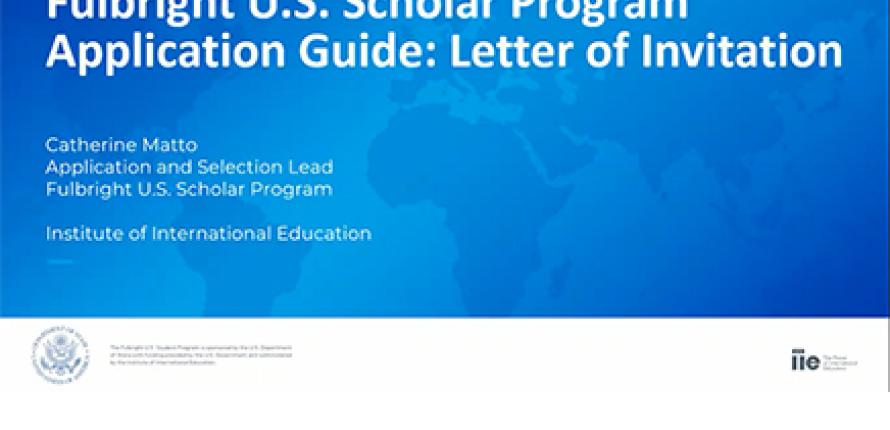Building an International Career

Building an International Career: Everything You Need to Know About Letters of Invitation
By Fulbright Program Staff
While completing a Fulbright U.S. Scholar application may seem daunting, we strive to offer applicants the information and support they need to complete the process successfully. The first step towards a successful Fulbright U.S. Scholar application is obtaining a letter of invitation. So, what is a letter of invitation, and how do you obtain one?
Letter of Invitation
A letter of invitation is an expression of interest from a host institution outside of the United States. Some Fulbright U.S. Scholar Program opportunities require a letter of invitation from a host institution in the scholar’s selected host country.
A letter of invitation should include:
- Proposed Activities: When you land in your host country, what do you propose to do? Your letter of invitation is the right place to lay out activities, such as research at an institution, your special lecturing needs, and anything else that will benefit you and your host institution.
- Project Timeline: When and for how long will your project take place? It is important to clearly relay your plans, dates, and other pertinent information to your proposed host institution. When you provide a clear outline of your project, the letter will allow you, your host institution, and Fulbright Peer Reviewers to fully understand how you will make the most of your Fulbright experience.
- A Host “Seal of Approval”: Why is your host institution interested in working with you? A description of the host faculty member/institution’s interest in the applicant’s project and how it will benefit the host institution will persuade Fulbright Peer Reviewers of your positive impact, as well as the timeliness of your project.
Curious to learn more? For guidance on letters of invitation, identifying potential hosts, and contacting institutions abroad, watch the embedded video.
Prefer to read? Additional details on this component of the application can be found in Application Requirements.
